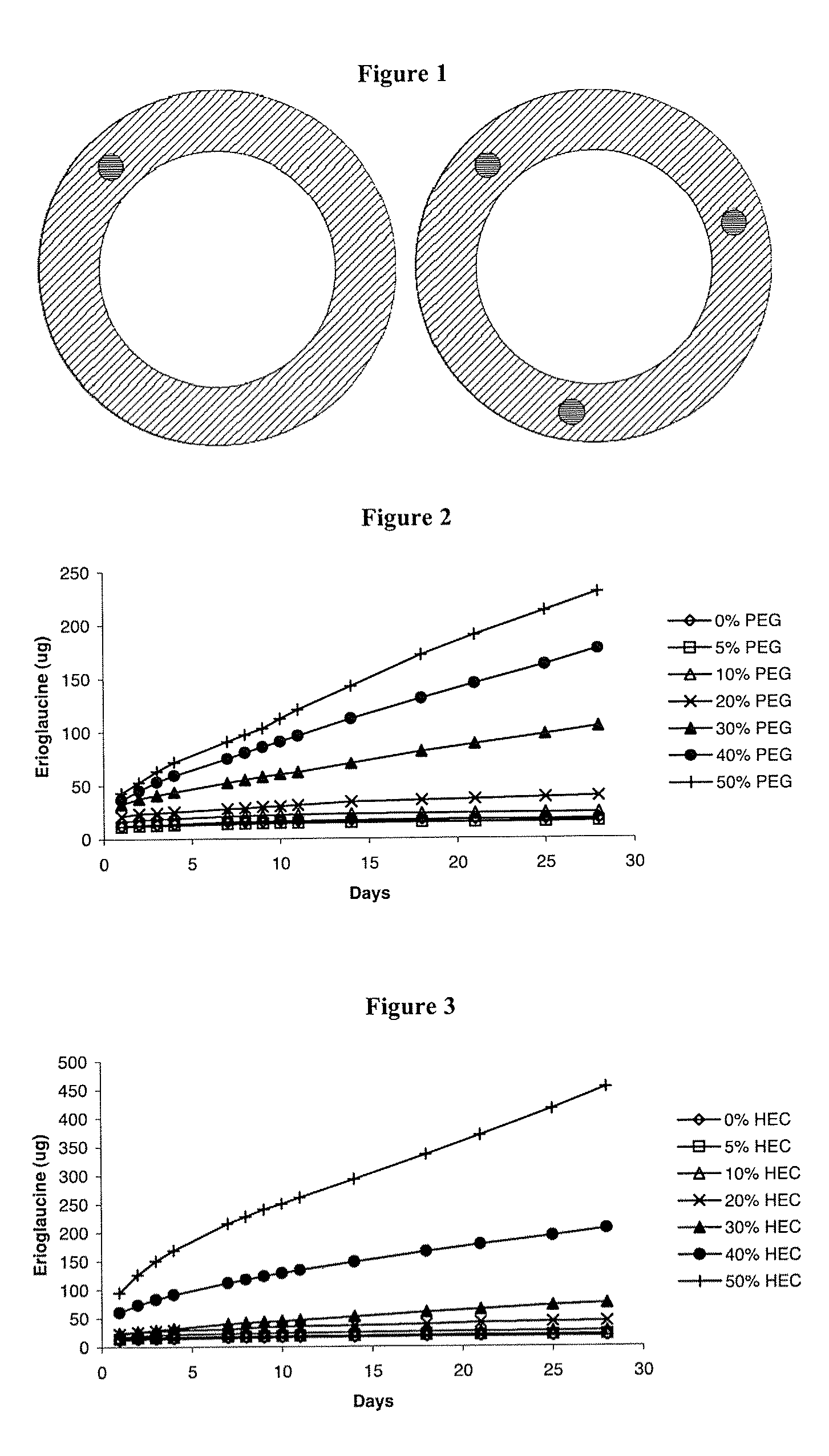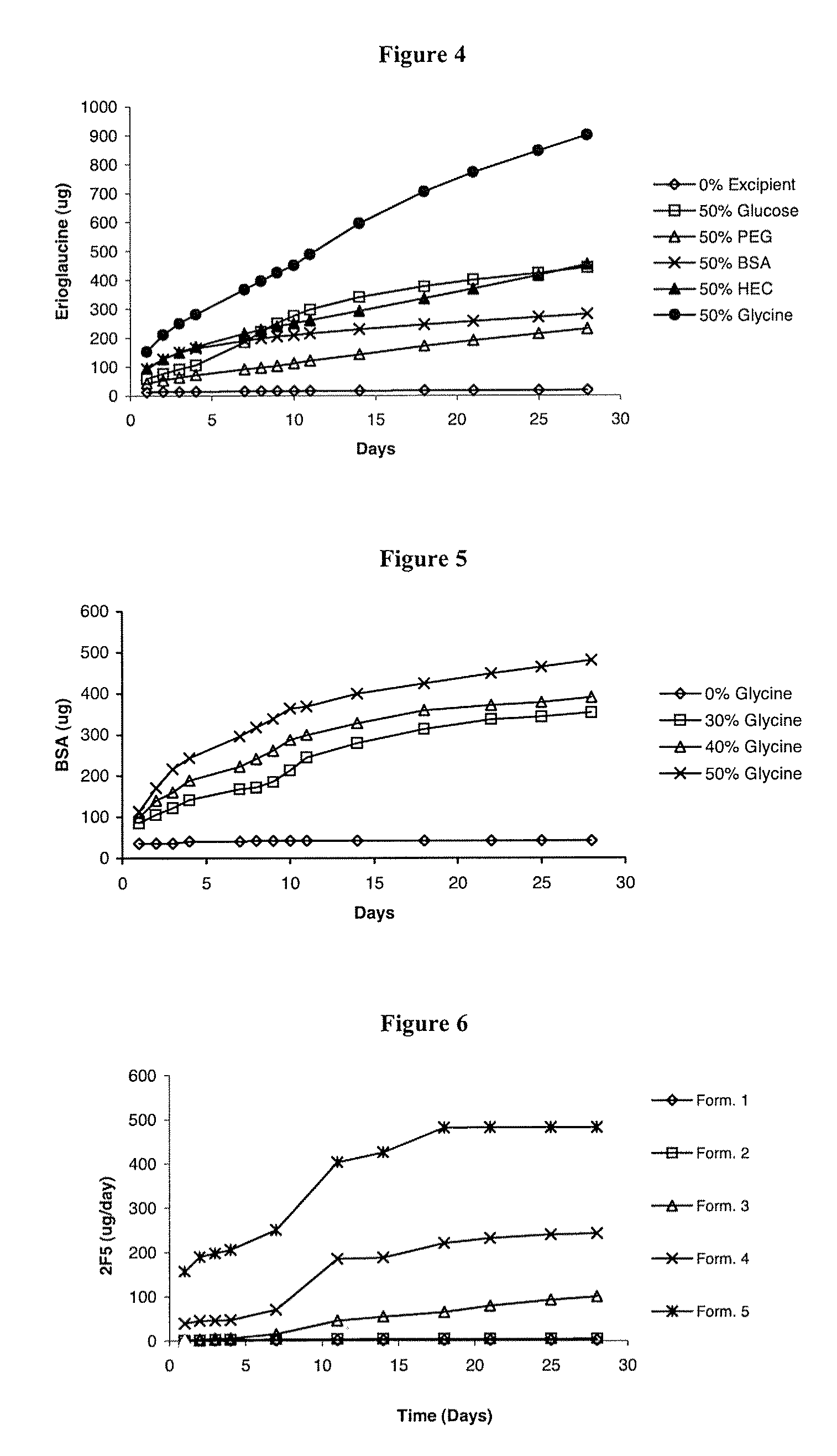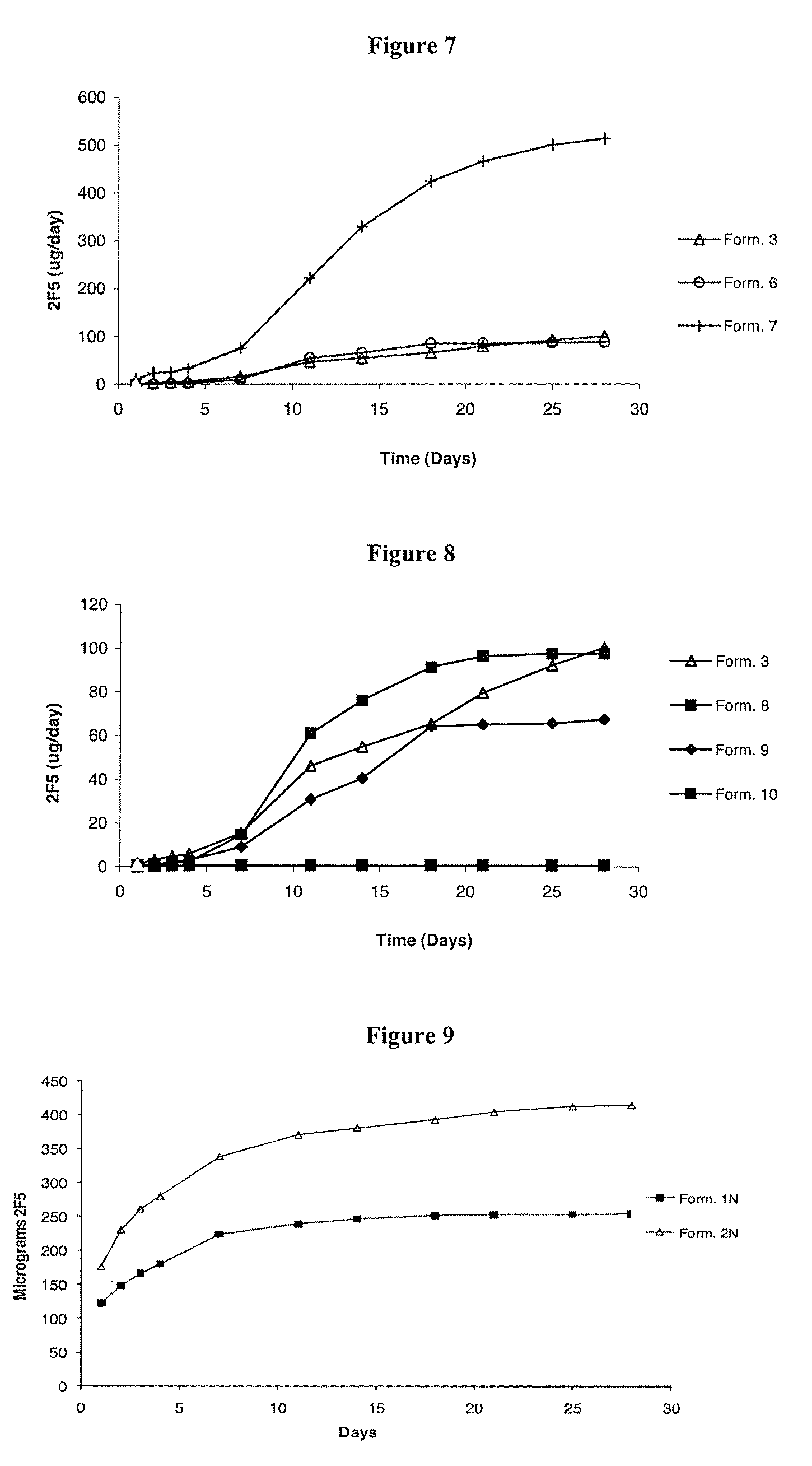Intravaginal drug delivery devices for the delivery of macromolecules and water-soluble drugs
a technology of macromolecules and intravaginal drug delivery, which is applied in the direction of viruses, other medical devices, peptides, etc., can solve the problems of limited polymer materials used in the construction of commercial vaginal rings, unable to meet the needs of patients, etc., to achieve the effect of facilitating sustained release of water-soluble drugs
- Summary
- Abstract
- Description
- Claims
- Application Information
AI Technical Summary
Benefits of technology
Problems solved by technology
Method used
Image
Examples
example 1
Sustained Release of Bovine Serum Albumin from Intravaginal Drug Delivery Devices
[0084]Silicone elastomer vaginal rings containing a single channel were manufactured according to the general method described above. Silicone elastomer inserts containing 1.0% w / w BSA, 20.0% w / w water-soluble release enhancer (glycine, glucose, PVP or PEG 3400) and 79.0% w / w LSR-9-9508-30 silicone elastomer (Dow Corning) were also manufactured according to the general method described above, with a desired length of 7.6 mm. A single insert was inserted into the channel formed in the silicone elastomer vaginal ring. In vitro release experiments were conducted as described above, except quantification was performed using a BCA™ [bicinchoninic acid, a compound used in the kit to assay for the protein] protein microassay kit (Pierce, US). The cumulative release data over fourteen days are presented in Table 1.
[0085]
TABLE 1Cumulative release of bovine serum albumin (BSA) from vaginal ringscontaining a singl...
example 2
Sustained Release of the Monoclonal Antibody 2F5 from Intravaginal Drug Delivery Devices
[0087]Silicone elastomer vaginal rings containing a single channel were manufactured according to the general method described above. Silicone elastomer inserts containing 2F5 were prepared as follows. Water was first removed from the 2F5 stock solution (13.01 mg / ml) by freeze-drying 2F5 solution (10% w / w) mixed with glycine (10% w / w). After drying, the remaining portion of glycine (30% w / w) was mixed with the freeze-dried 2F5-glycine cake. Uncovered silicone inserts were manufactured by mixing the 2F5-glycine mix with silicone elastomer (LSR-9-9508-30, 50% w / w) (Dow Corning) in a DAC 150 FVZ-K Speedmixer for 30 seconds at 3000 rpm. The mixture was then inserted into a 2 ml syringe and manually injected into PVC tubing of 3 mm diameter and allowed to cure for 24 hours at RT. After this time, the rods were cut into 9 mm lengths, and the PVC sheath carefully removed from the cured silicone elastome...
example 3
Sustained Release of the HIV Envelope Protein gp140 from Intravaginal Drug Delivery Devices
[0090]Silicone elastomer vaginal rings containing a single channel were manufactured according to the general method described above. Silicone elastomer inserts containing the HIV envelope protein gp140 were prepared as follows. A solid mixture containing gp140 and glycine (weight ratio 2:98) was prepared by freeze-drying a gp140 / glycine buffer solution. Uncovered silicone inserts were manufactured by mixing, in a 50:50 weight ratio, the gp140-glycine mix with silicone elastomer (LSR-9-9508-30, 50% w / w) (Dow Corning) in a DAC 150 FVZ-K Speedmixer for 30 seconds at 3000 rpm. The final insert contained gp140, glycine and silicone elastomer in the weight ratio of 1:49:50. The mixture was then inserted into a 2 ml syringe and manually injected into PVC tubing of 3 mm diameter and allowed to cure for 24 hours at room temperature. After this time, the inserts were cut into 9 mm lengths, and the PVC ...
PUM
| Property | Measurement | Unit |
|---|---|---|
| cross-sectional diameter | aaaaa | aaaaa |
| length | aaaaa | aaaaa |
| diameter | aaaaa | aaaaa |
Abstract
Description
Claims
Application Information
 Login to View More
Login to View More - R&D
- Intellectual Property
- Life Sciences
- Materials
- Tech Scout
- Unparalleled Data Quality
- Higher Quality Content
- 60% Fewer Hallucinations
Browse by: Latest US Patents, China's latest patents, Technical Efficacy Thesaurus, Application Domain, Technology Topic, Popular Technical Reports.
© 2025 PatSnap. All rights reserved.Legal|Privacy policy|Modern Slavery Act Transparency Statement|Sitemap|About US| Contact US: help@patsnap.com



